系列分析:与用户留存和游戏沉浸相关的逻辑分析,下篇
篇目10,游戏融入故事元素能够提高玩家留存率
作者:Brian Poel
休闲免费游戏通过各种设计技巧鼓励免费玩家沉浸其中,掏钱消费。虽然当前媒介不乏古老游戏内容,但没有内容比故事叙述更古老,更通俗。故事作为传统娱乐方式,是人类相互交流,同世界沟通的原始精神渠道。在游戏中,故事是持续体验的刺激因素,因此其在创造长久粘性和真实病毒式传播方面存在巨大潜力。
第1日留存率
在免费游戏中,最重要的的营收参数是新用户留存率。你无法基于仅体验1次的玩家创收。那么游戏指南任务艰巨(游戏邦注:很多游戏都提供操作指南)。那么要如何让指南既提供充足信息,又富有娱乐性?那就是将其打造成故事。
是的,很多游戏都以关卡形式向玩家呈现任务列表,将玩家带入各种游戏玩法中。多么枯燥乏味!融入某些背景,某些含义,同关卡联系在一起:创造一个故事。
总结过去
若故事是吸引玩家的重要架构,那么3回合故事是创建结构模块的基本模式。3回合玩法已沿用多年,是个通用模式。
传统定义是:设置、应对、结局。而体现在休闲游戏中是:设置关卡,玩家应对和完成关卡任务,最终决定关卡奖励。
这似乎把所有步骤都归结至关卡一点上,但你收获的远要有趣得多:以3个独立关卡创建故事脉络。让首个关卡充当基础和故事背景,同第二个关卡的内容形成对比,然后让第三个关卡将所有内容串起来,然后创造故事情节的最终结局。
促进玩家消费
若第1日留存率是你的首要考虑因素,那么第7日留存率就仅次于此。那么要如何缩小最初体验同玩家消费之间的差距?将玩家消费转变成角色消费!通过在游戏中引入角色故事脉络,赋予游戏个性色彩。
你的首个角色应是通过指南指导玩家体验的旁观者,但不要仅停留于此!引入系列次要角色,让每个角色都有自己的故事,自己的关卡。这些角色在目睹关卡成功完成时都应有面部表情(游戏邦注:而这只有玩家能够实现)。
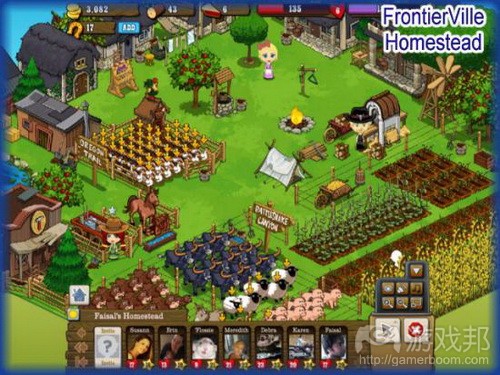
Frontierville from .rackspacecloud.com
举例:《Frontierville》——游戏一开始就引入Hank、Fanny和Bess角色,每个角色都有其任务安排。迎合情人节,玩家需决定哪个角色会坠入爱河。这让玩家享有在其自身领域内实现故事内容差异化的权利。
高瞻远瞩
要想长久留住玩家,就需好好研究短期关卡。你需融入长远横向故事脉络,充当奋斗目标和发展方向。这样玩家既能完成个人任务,从中获得成就感,又知道前方还有更丰富的故事内容。
举例:《City of Wonder》——和传统游戏《文明》一样,《City of Wonder》的发展脉络是沿科技进步路线,将玩家从石器时代带入现代社会。这些众所周知的探索和创新时代给当前玩家选择和期望提供背景,而玩家同时又能叙述自己的城市故事。
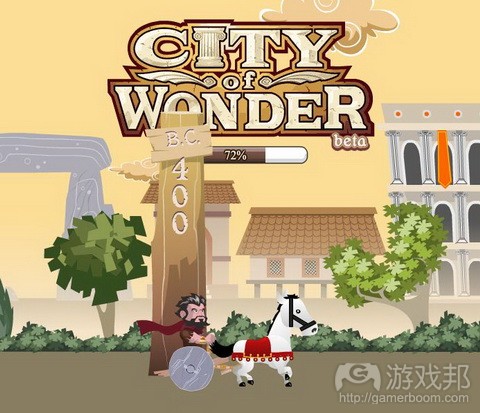
city of wonder from rackspacecloud.com
结交朋友是关键
留存率显然非常重要,但我们都知道病毒式传播和随之而来的玩家获取投入是推动游戏发展的实际因素。如何促使玩家不仅邀请好友,而且真正关心好友活动内容?是的,就是通过故事。
以富有意义的方式将好友融入故事叙述当中(游戏邦注:而不仅仅是点击X道具),促使玩家好友在提供帮助时觉得自己也融入故事中。玩家应能回顾故事,观察好友参与足迹。
举例:《CityVille》——想要完成某些建筑,你需要X数量的好友提供帮助。游戏不是简单呈现目标发展状况,相反游戏让所有好友都在建筑中扮演某名称的角色,基于其给予帮助的先后含蓄呈现重要性差别。这就是在典型“收集X”关卡中融入故事内容。
错失机会:建筑完成后,所有人员任务分配记录便消失。
继续讲述好故事
优秀故事的作用在日常生活中随处可见——从我们听到的新闻,读到的博客以及观看的电影电视内容。故事是我们解释和理解周围世界及同其关系的方式。在游戏中融入故事元素,你就能把系列枯燥重复的内容变得富有意义,值得分享。
篇目11,巧用“刷任务”机制有助于延长游戏寿命
“我恨《魔兽》。”
“啥?你玩过么你?”
“玩过。”
“你几级了?”
“60级左右。”
“那你有什么不满意的?”
“没,我就是讨厌。”
我有个朋友连续几周都在疯玩暴雪的《魔兽》,令我吃惊的是,他居然觉得这游戏没意思。他觉得自己像是被“骗”进游戏里似的,因为他一直在“刷任务”。他一边在游戏的战斗中欲罢不能,另一边又在自己的心里进行激烈的思想斗争——就这么纠结地玩下去,痛却并不快乐着。
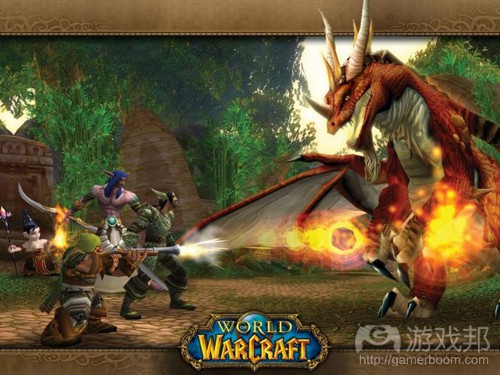
world-of-warcraft(from puzzles-gallery)
大多数玩家都知道何谓“刷”,比如“刷”怪、“刷”副本、“刷”任务等等,但基本上可以这么定义:当玩家出于某些目的必须重复地、不断地、一次又一次地做同样的事,这就是“刷”(游戏邦注:《Dragon Quest》貌似就是一款“刷”出来的经典RPG)。在游戏中,如果突然蹦出个15级的玩家才能放倒的某怪,可是此时玩家只有12级。怎办?好吧,拉回去再练练——砍同级怪一直砍到15级。
“刷”当然不是件好事。除了抱怨,我们是不是该站在游戏开发者的立场来看待所谓的“刷”?什么时候该“刷”?什么时候不该“刷”?
设计师的那把“刷”
对游戏设计师来说,如果“刷”是游戏的必要部分,那么条件有二:
1、长期动机对玩家的吸引力无比强大
2、玩家已掌握基础机制和奖惩系统
玩家能坚持不懈地“刷”下去,可能是因为玩家已经为游戏付出了太多,不玩到底不甘心。《FarmVille》的“农场主”们种了好几星期的菜了,眼看着“谷仓”要到手了,此时放弃,以前的努力不是付诸东流了么?这就是一个强悍的长期动机——当下吃尽苦头为的是日后的“甘”来。
但无论长期动机本身多么强大,也不能把玩家沦为“粉刷匠”。玩家不仅必须重复做相同的事,而且是做早已烂熟的事。穿过玄关,开门看你朋友在不在“刷怪”;穿过玄关30次,开门30次看你朋友在不在“刷怪”——你朋友在“刷”,你也在“刷”,走几步开个门的事你不是早会了么?
“刷任务”有理?
“刷”存在自有其合理之处。首先受益的游戏的寿命,简单到只要让玩家重复相同的事。这确实是增加游戏时间的最廉价的方式了。如果你希望游戏时长20小时,目前才过半,那么让玩家把时间“刷”出来吧。尽管系统和内容不变,还是够玩家“刷”上好一阵子。
这就是为什么“刷”这么受MMORPG和Facebook社交游戏的亲睐——这些游戏的成功本身就是玩家日复一日,年复一年地“刷”出来的。对游戏开发商来说,游戏要hold住一段比较长的时间,与其制作新内容,还是“刷”更划算。
“刷”当然也有负面作用,那就是,玩家讨厌“刷”。“刷”本身是件很无聊的事,还会拖跨游戏的质量,使游戏变质。另外,如果“刷”得太过分,消极影响就会把积极作用掩盖掉。不要说延长游戏寿命,可能会把许多玩家“刷”到丧气,最后直接“刷”出游戏。
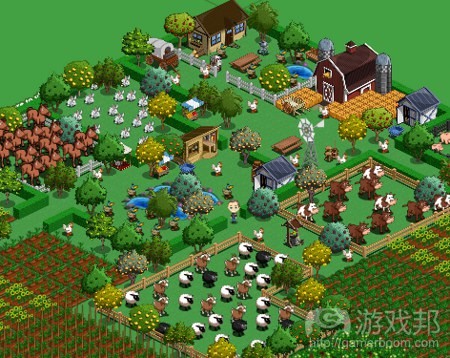
farmville(from geekologie.com)
“刷”得健康
小心地安排“刷”,能保证游戏平衡。如果需要延长游戏时间,增加一点“刷”往往效果显著。技巧在于保证玩家能以“刷”的方式接近新的基本机制和奖惩系统,且“刷”的速度不会让玩家丧失兴趣。
例如,玩家“刷”了50只野猪就想退出游戏或表现出无聊的样子,那么你就要考虑在第40只野猪倒下的时给玩家换换口胃——该让新怪出来救场了。这样就灵活地“刷”长了游戏时间。
只有在“刷”行为安排得不合理时,玩家才会抱怨。如果游戏总是细水长流般地给玩家新内容,保持玩家的兴趣,那么玩家不仅会感谢游戏的长度,还会为不断地学习新内容而兴奋。无论是摘星星、打野猪还是种番茄,只有认真地按排“刷”,才能留住玩家的心。
篇目12,改良旧机制和互动感有助于延长游戏寿命
作者:Alex Norton
游戏设计总是先往后看再往前看。有时是设计师有意为之,而有时是无心之举,但它总是会发生。每个绝妙的新想法都是构建于改善单个或多个老想法之上,最棒的游戏设计师都明白这点。
我最大的毛病之一是当有人跟我说“别重新发明轮子”(游戏邦注:这里指别白费力气做重复工作)时,他们往往会迅速为此举动感到后悔,因为我会开始高谈阔论,告诉他们如果没有人重新发明和改造轮子,我们就永远看不到轮胎、悬吊、辐条和胎面等,而这些东西都让轮子在生活中发挥更大的作用。
但是要重新改造轮子,就必须有个轮子作为对象,这就是我们在游戏行业中所做的事情。近期获得成功的Halfbrick Studios所开发的iOS游戏《Jetpack Joyride》便是绝佳的例证。
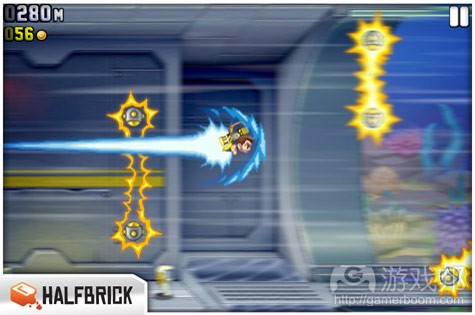
jetpack-joyride(from gamaustra)
这是款很棒的游戏,所采用的模型显然取自当年“控制直升飞机别撞到隧道边缘”类型的游戏。他们借鉴了这个想法,用道具、成就和你能够获得的特殊装备等内容加以包装,制作出一款绝妙的游戏。他们重新改造了轮子,而事实证明他们做出了有效的产品。
这种方法是否总是有效?
这种方法并非总是有效。坦诚地说,有些过去的想法并不是那么棒。然而,有些想法不仅获得了令人称奇的成功,还经受住了时间的考验。
《雷神之锤3:竞技场》(发布于1999年)和《暗黑破坏神2》(发布于2000年)这两个截然不同的题材便是绝佳的范例。当然,历史上还有更多值得称道的游戏佳作,但这两款是我编写本文的研究案例。
尽管游戏面世已超过10年,这两款游戏仍然很流行,是私人LAN聚会最钟爱的作品,其图像与许多现代竞争者相比显得毫不逊色。
为何会出现这种状况?现代游戏开发者要怎样才能制作出能够如此经受时间考验的游戏呢?答案在于按键的使用上。
按键?
当然,我说的“按键”带有比喻的含义。让我用一则故事来解释。我的日常工作与博彩业有很大的关联,所以会事先知道许多将推广到市场上的新产品。有个产品可以算是“重新发布”老式吃角子老虎机,这种赌博机已经在澳大利亚消失了十多年。
厂商试图借助这股“怀旧潮”,因为所有地方的人都认为重新发布经典老虎机会激发人们的怀旧感,所以这是种可行的新产品。
当我听到这则新闻时,我感到非常兴奋,我想起80年代在爷爷家玩过这种产品,我喜欢那种拉动杠杆后飞轮快速旋转的感觉。我喜欢看到它将旋转球打入齿轮中,看到五颜六色的水果出现在滚轴形的屏幕上。
不用说,当我在测试室看到首个产品时,的确激起了怀旧感。这款新机器无疑与老式的相同,只是略显现代化。传统的滚轴屏幕被数字化屏幕所取代,屏幕上显示的是精心设计的美术内容。
机器处在测试状态并且可以体验,所以我拉动了杠杆。飞轮开始旋转,灯光开始闪烁,但是感觉却不对。那种怪异的感觉甚至让我认为机器存在故障。当然,事实上它运转良好。
但是,机器的运作原理与原先已经不同,杠杆臂连接着机器内的弹簧臂,当弹簧完全压缩时就会按到一个小按键。不再有靠自己的力量让机器“飞速旋转”的感觉,不再有对设备产生影响的感觉,也不再有与机器互动的感觉。
那种完全无联系的感觉显得很怪异。我不知道如何来表达,曾经那种互动体验现在变得冷淡和毫无互动感。
我向厂商声明了自己的担忧,却遭到他们的嘲笑。我甚至建议他们构建在杠杆臂中构建简单的小飞轮机制,这个小飞轮可以没有任何功能性的目的,它的存在只是为了产生那种拉动杠杆的“感觉”。
他们忽略了我的建议,义无反顾地发布了产品。毫无疑问,这个产品并没有受到热捧。官方理由是,人们不喜欢赌博领域的“怀旧产品”。
这与电子游戏有何关联呢?
这与《雷神之锤3:竞技场》和《暗黑破坏神2》等电子游戏有何关联呢?把上文所述的“按键”视为玩家同游戏间的互动。它必须有良好的感觉,就像扑克老虎机的杠杆臂。
你可以通过改善按键来提升其感觉,使之显得与玩家更有联系,你对按键的改造也可能会让玩家觉得与机器失去联系,这两种都算是深层次设计。
当游戏项目开始时,要尽量用简明扼要的句子来描述游戏。得出这个句子后,你添加到游戏中的每样与该句子描述一致的内容都会使游戏的质量获得提升,如果你添加的内容与句子描述有偏差,那么就不会有很好的结果。
雷神之锤3:竞技场
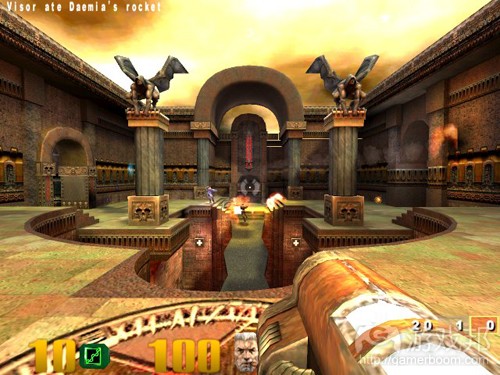
雷神之锤3(from theworldofwindows.blogspot.com)
首先,我们以《雷神之锤3:竞技场》为例。它可以简单地描述成“快节奏、科幻和多人死亡竞技”,仅此而已。游戏能够流行如此长时间,原因有两个。
第一,游戏以John Carmack制作的精美引擎为基础构建而成。这个引擎很强大,足以驱动接下来十多年来的许多游戏(游戏邦注:比如《重返德军总部》、《绝地学院》和《使命召唤》等)。
第二,游戏设计清晰,概念简单,用以上一句话便可以总结。游戏的每个层面都遵从这句描述。玩家在游戏中不会感到困惑和无所适从。当你玩游戏时,你会沉浸在游戏中。游戏中的所有内容都不会与你对抗或者影响你的游戏体验。
你可以使用4个移动键、1个跳跃键和1个射击键,控制系统相当简单。玩家可以迅速流畅地移动。游戏在任何时刻都不会放慢速度或打乱玩家的节奏,却仍然给玩家足够的自由来开发自己的玩法风格并运用于游戏中。
相比之下,id Software随后发布的《毁灭战士3》显得颇为逊色。游戏玩法较为缓慢,而且缺乏节奏感。它的确也是款很棒的游戏,但是需要停止游戏用键盘输入数字,或需要放下武器来取出火把之类的设计会影响玩家在游戏的沉浸感。
暗黑破坏神2
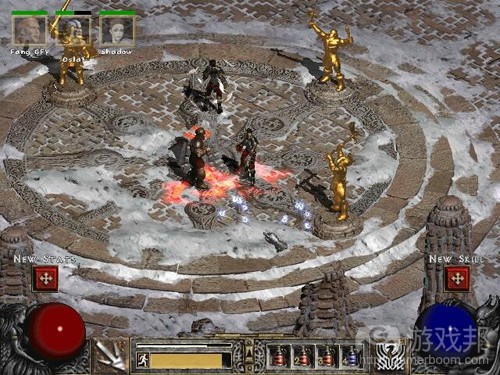
暗黑破坏神(from kat.com)
《暗黑破坏神2》也是个绝佳的范例。该系列游戏的粉丝都知道,它用单个按键完成了相当复杂的控制系统。当然,如果喜欢的话你可以用键盘上的数字键,但是靠鼠标左右键可以完成几乎所有操作。
整款游戏的设计尽量迎合玩家需求,任何人都能够轻易上手。它的节奏设计也堪称完美,首个区域内角色几乎不会死亡,但是仍然带有足够的风险,让你时刻保持集中精力。
它有简单的多人模式,精心构建的程序道具和关卡系统以及足够的再玩性,保证人们能够坚持玩游戏数年时间,而且确实也实现了这个目标。
暴雪发现,《暗黑破坏神》首作中的许多功能让玩家感觉不到与游戏间的联系,于是就将这些功能移除或改造,制作出了一款清晰、简单和带有极大再玩性的游戏。
它们都遵循了“探索、杀戮和获得战利品,同时发展角色”这个简单的设计原则,游戏中的每个层面都反映出这点。没有任何东西阻碍你取得上述体验,没有任何东西放慢你的发展进程。游戏中没有不断重复的过场动画、没有完全相同的战斗遭遇战或脚本事件,没有任何让游戏进程显得拖沓的元素。
这种“简单化”确保了游戏不断在单人和多人领域内获得成功,发布后数十年来依然能够保住自己在游戏商店货架上的地位。
结论
当设计游戏时,在开始动手之前,先用一个简单的句子来描述你意愿中的游戏。此后,对于你做出的每个决定或你想要添加的每个功能,都看看它是否符合这个简短的描述。如果它与描述相差过大,或者描述最终变得过长,那么游戏最终就会变得过于复杂,玩家也无法沉浸其中。
记住,游戏是种玩家用来逃避现实的方法,应当让他们忘却在自己和游戏之间还有键盘或其他控制器。图像和故事都能够帮助实现这一点,但游戏的感觉能给你带来忠诚的用户,就像老虎机那样。
老虎机的目标是拉动杠杆让飞轮旋转,但是如果你只专注于让杠杆引导飞轮旋转,那么人们不会愿意玩这样的老虎机。他们需要的是享受拉动杠杆和按动按键导致屏幕有所变化的感觉。
我希望自己的这些观点能够对游戏开发者有所启发。
篇目13,社交游戏可提供日常奖励提高用户留存率
作者:Brice Morrison
“很多升到23级的玩家选择退出了。”
“这怎么回事?”
“还不确定。也许是商店道具过于昂贵?也许是XP水平太高?我们得尽快弄清楚。”
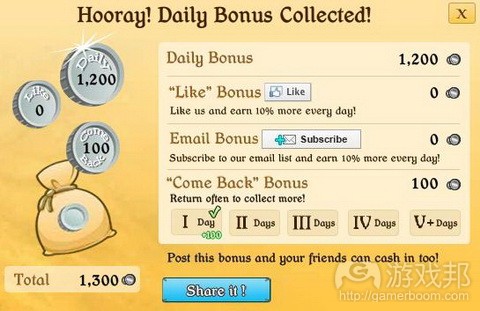
City Of Wonder DAU from thegameprodigy.com
社交游戏虽然成绩斐然,但其依然是个困难重重的领域。投身社交游戏领域,就会面临“玩家消亡”的风险,这是指玩家会突然放弃体验游戏。这非常危险,而且很致命。这是从1到100级所有玩家可能带来的威胁。减少玩家障碍,让玩家持续享受其中非常重要。
这是微交易模式游戏的一大关注点。零售游戏通常是一次性出售内容(50-60美元),玩家购买后体验多久无关紧要。从经济角度看,只要他们掏钱,游戏就算成功。
但很多微交易模式的游戏,例如Facebook社交游戏,则要依靠玩家持续体验,方能进行更多的游戏虚拟交易。因此,这类在线游戏所面临的风险不是玩家放弃购买游戏,而是玩家停止体验游戏。这种情况随时都会发生。
社交游戏开发者通常都会寻找方式促使玩家持续回访。一个常见方式是基于玩家的登陆情况提供游戏奖励,这也是我们即将讨论的内容。
游戏设计:Daily Bonus(日常奖励)
应用平台:Facebook、MySpace及其他在线平台
适用体验:每天返回游戏
日常奖励是促使玩家持续回访的有效方式,这被应用于众多杰出Facebook游戏。在吸引玩家眼球,促使他们隔天继续回访游戏后,多数游戏都会提供Daily Bonus,促使玩家今后继续返回游戏。
Playdom《City of Wonder》的Daily Bonus
在Playdom的《City of Wonder》中,屏幕旁边会出现各种图标,诱使玩家进行点击。若玩家没有在过去24小时里登陆游戏,他们就会看到一个小型的闪烁包裹:

City Of Wonder bags(from thegameprodigy)
点击后,游戏会弹出页面,呈现玩家会在“Around the Game” 操作中得到的各种回馈。虽然多数游戏奖励都基于玩家在游戏中所进行的操作,但这里游戏要奖励的是玩家在游戏之外所进行的操作。
虽然其他内容也颇值得关注,但这里我们主要谈论两点内容: Daily Bonus和Come Back Bonus(回访奖励),二者存在显著差别。
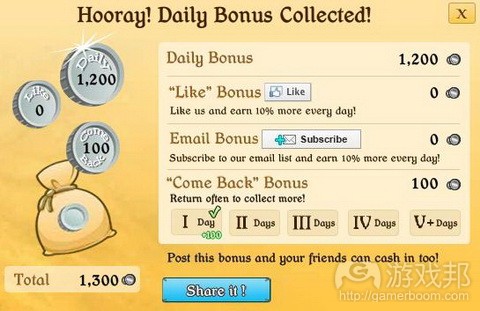
City Of Wonder DAU 02 from thegameprodigy.com
Daily Bonus。上图呈现的是Daily Bonus。在《City of Wonder》中(游戏邦注:其他热门社交游戏也是如此),玩家因操作各种任务而获得游戏奖励,然后他们会在游戏中花费这些货币,希望从中获得更多奖励。例如,花钱币购买新建筑,扩大城市规模。
在运用游戏货币方面,Daily Bonus采取不同方式。Daily Bonus旨在鼓励玩家每天登陆游戏;游戏通过给予玩家间隔24小时就会重置的游戏内容,使其得以从中获得货币,换句话说,若玩家没有每天回访,他们就会丧失获得货币的机会。
Come Back Bonus。除Daily Bonus外,此留存设置也给予供玩家进行期待的游戏内容。第一天,玩家会因登陆游戏而得到100个Coin Bonus。游戏窗口显示,若玩家连续5天都登陆游戏,他们会得到更多钱币。
头天奖励会令玩家庆幸自己当天有登陆游戏,第2天和第3天的奖励则促使玩家今后定期登陆游戏,从而获得更多回馈。这连同本已颇丰厚的Daily Bonus令回访游戏变成非常诱人。
这里需注意的是,Daily Bonus提供的回馈要吸引玩家眼球,方能发挥其作用。例如,高等级玩家拥有的货币数量很多,这使得他们根本无暇顾及奖励给予的小恩小惠。或者玩家尚未融入游戏中,不足以感受到货币的优点,这也是为什么游戏鲜少在玩家首次加载游戏时给予其Daily Bonus回馈。
Zynga《咖啡世界》的Daily Bonus
Daily Bonus设计还有其他选择方案。《咖啡世界》基于Come Back Bonus模式,明确告知玩家他们每天将从回访中得到什么回馈(而《City of Wonder》则未透露此内容)。这旨在令奖励变得更突出,因为玩家会期待自己即将获得的东西。
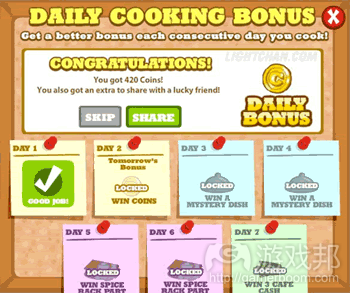
win-coins(from thegameprodigy)
给予日常奖励是社交游戏开发者促使玩家回访游戏的简单方式。而那些促使玩家期待因登陆而获得回馈的复杂机制,则能够使游戏设计变得更富吸引力,让玩家经常登陆游戏。
篇目13,解析社交游戏设计之用户留存率
游戏邦注:本文作者是Gregory,原文发表于2010年9月9日。
社交游戏开发商和发行商经常会讨论社交游戏的三大特性,即病毒性,盈利性和留存率。本篇文章将针对用户留存问题展开研究。
用户留存率,也被称为用户粘性,可以说是游戏设计的基本要素。我敢保证,那些前社交游戏设计者(包括我在内)常常会因为自己精心制作的游戏变成了发行商任务清单中的一小部分内容而感到愤恨和委屈。
甚至,他们也因为在第一波社交游戏浪潮里,游戏除了作为一种病毒式传播“机器”,并未能体现任何用户留存功能而感到极端郁闷。其实在第一波游戏设计浪潮中也不乏好游戏,例如《Dungeons & Dragons: Tiny Adventures》,而且,正是从那时起,社交游戏开始慢慢步入正轨,并取得了很大的进展。从其它游戏类型转变成社交游戏的过程中,最大且最好的变化即是,当别人问你什么是用户留存功能时,你已经能够应对自如了。首先你可以告诉他们,你的游戏设计中最棒且最有趣的部分是什么。
随之你还应该思考一些更为具体的问题。因为一些“较机灵”的人就会继续追问你,到底采用了何种特定的游戏设计元素才能够挽留更多用户。一款有趣的对抗小游戏将吸引玩家花费15分钟于游戏,但是它的用户留存率问题即是:这些用户明天是否还会继续玩游戏呢?也许你玩过《Farmville》,对游戏中的庄稼种植任务也是再熟悉不过了。在游戏中你需要种植一些庄稼,并隔一段时间回到游戏中收获它们。一些庄稼需要两天的时间才会成熟。可以说,这是社交游戏中最普遍的用户留存机制。玩家在游戏初期进行点击,并随后回到游戏中查看结果。这也正是很多非游戏设计者所关心的用户留存机制问题。
现在,我们将种植庄稼任务与《Farmville》中整体的用户留存机制作比较:从仅有的几块农田发展成为一大片广阔的土地,并形成一座稳定的农场。你也许会觉得它们之间的联系并不大,但是事实上,用户留存机制已经把它们牢牢紧扣在一起了。

farmville(from kotaku.com)
以下是提高用户留存率的几大方法:
故事情节和游戏角色:让玩家愿意回到游戏中观看游戏情节的发展。美剧《Lost》就是个典例。它能让观众心系着故事情节,想打开电视观看他们喜欢的角色和情节的发展。如果玩家能在游戏中操纵主要的游戏角色,并自行选择故事情节的发展,那么他们定会想要重新回到游戏中,观看游戏角色和情节的发展。
制定“超额”的任务清单:不论玩家的游戏时间是一小时,一周还是一个月,都为他们安排更多的游戏任务。在这种“超额”的任务清单中,玩家可能会产生一种“不完整感”,而因此想要尽可能地回到游戏中,继续挑战并完成游戏任务。
所有权和收集:人们总是喜欢收集一些“战利品”。同时这种方法也能帮助开发者盈利。
愧疚感:让玩家因为没能重新回到游戏中而产生愧疚感。这种方法只能称得上是短期战略,如果长期使用将会适得其反。因为一旦玩家发现他们因为游戏而错失了更多东西时,他们将不会再回到游戏中了。
错失的机遇:在游戏中添加一些活动以“诱惑”那些离开了游戏的玩家,即他们如果能够及时回到游戏中,便能体验这些活动。玩家如果不愿意回到游戏也不会有所损失,但是这些活动却可以有效地吸引他们每天回来看看。如此,玩家还能感受到游戏世界的蓬勃生气,并因此提高他们对游戏的兴趣度。
每日活动:一天一次的游戏任务或者竞赛项目。
每周活动:你应该考虑所有玩家所具有的不同游戏模式,并思考如何做才能以不同的频率吸引不同的玩家。我建议现代社交网络必须同时具备每天活动和每周活动机制。
“冷却计时器”(Cooldown timers):这个机制也可用于上述几大方法中,但是我想要在这里对其进行详细说明。你可以通过它控制游戏的节奏和玩家在每一个关卡中的能量。可以说这是社交游戏中非常有效的一种机制。它的维持时间一般是5分钟至1小时。
让玩家能够积极愉快地与好友进行交流:不应该将病毒式传播与用户留存机制完全分离开来。它们也存在一定的交互性(游戏邦注:在一些优秀的社交游戏中尤其如此)。玩家可能会因为想和好友一起游戏而重新回到游戏中,所以提供玩家与好友一起游戏的机会可以说是一种有效的用户留存方法。
我曾经玩过《Magic: The Gathering》(可以说这是我玩过的游戏中最好的一款)。在游戏中我被很多熊一般大的“松鼠”袭击着,而唯一能够帮我存活的卡片却超出了我能够支付的范围。所以我便使用了“Jace, the Mind Sculptor”这张牌逃出了危机。我发现“Time Walk”这张牌能让我获得一个额外的回合。如果我在下一回合中再次使用“Jace”,我将能够找到“Channel”和“Farost Titan”这两张牌。我可以使用“Channel”对“Emrakul,Aeons Torn”发动攻击。除非出现了更大的对手,要不我便可以获得一个额外的回合。对“Emrakul”的袭击使我消灭了对手一半的卡片。而我也能够确信“Farost Titan”有能力打败“Gaea’s Cradle”。这时候我的对手已不再握有能够与我相抗衡的厉害角色了,除了“Banefire”,这真的是一张极其厉害的卡片,有可能对我的所有卡片造成致命的威胁。
我说了这么多,但是这与社交游戏有何关系呢?如果你经常玩《Magic》,那么你便能体会到我所描述的是一个多么有趣,愉快的故事。因为被这个游戏故事深深吸引了,所以我也希望那些没有玩过《Magic》的人能够和我一起体验这种乐趣,并进一步了解这款游戏。好的游戏都能够提供给玩家好的故事情节体验。而如果一款社交游戏缺乏好的故事情节,那么这可以说是它的一大败笔,将阻碍它的进一步发展。当你的好友告诉你他花费了15分钟在《Farmville》中等待收割番茄时,你是否还会觉得这个游戏情节有意思呢?
一个有趣的故事情节必须让玩家之间能够进行有趣的互动,或者让玩家能够真正融入游戏,体验游戏的乐趣。角色扮演游戏在这一方面就表现得很出色(我经常与好友一起玩《Dungeons & Dragons》)。纸牌角色扮演游戏使玩家能够融入史诗般复杂的游戏世界,深切地体验到游戏的乐趣。玩家可以结合自己丰富的想象力,在游戏中尝试任何挑战。而视频角色扮演游戏虽然带有较多局限性,但是它所展现的画面感和视觉震撼都推动玩家进一步与游戏角色相融合。好的游戏作品将能为玩家呈现好的故事情节,而身临其境的“战争”体验也将带给玩家难忘的情感冲击。
但是社交游戏却做不到这几点。社交游戏中并没有角色扮演类游戏(游戏邦注:作者认为《Mafia Wars》和其它类似的游戏都不属于角色扮演游戏)。这些游戏中并未提供给玩家更深层次的互动,玩家也很少会在游戏中遇到让人激动的转折点。但是社交游戏却可以抓住这些机会,因为它们能帮社交游戏真正地提高用户留存率。而且如果玩家能告诉好友自己在游戏中的体验,那么这无疑也是一种很有效的病毒式传播。
在《Mafia Wars》等社交游戏中,你必须操纵着游戏中的黑手党等角色,而且除了一些派对游戏(如《Pictionary》,《Time’s Up》)以及文字游戏(如《Boggle》,《Scrabble》)等,甚少有游戏不需要玩家操纵任何角色。
篇目10,篇目11,篇目12,篇目13,篇目14(本文由游戏邦编译,转载请注明来源,或咨询微信zhengjintiao)
篇目10,Solve Player Retention with the Oldest Trick in the Book
By Brian Poel
Casual freemium games utilize a variety of game design techniques to encourage free-to-players to stick around and spend money. While many are gamey artifacts of the medium, there’s nothing more old-school and non-techy than good old storytelling. As the original form of entertainment, stories tap into a primal psychological way for human beings to relate to each other and to the world around them. In games, stories provide powerful motivation to keep playing, and therefore the greatest potential for creating long term stickiness and heartfelt virality.
Day 1 Retention
With freemium games, the absolutely most important monetization metric is new player retention. You can’t monetize a player who walks through the front door on day one and walks right out again. This puts enormous pressure on the tutorial (your game has a tutorial, right? good!). So how do you make your tutorial both informational and entertaining? Package it inside a story!
Yes, many games use a string of quests to give players simple tasks to accomplish, introducing them to various aspects of gameplay. How dry! Give some context, some meaning, something to attach the quests together: give them a story.
Learn from the Past
If a story is the fundamental structure to capture your players — the 3 act story is the most basic set of building blocks for that structure. There’s a reason that the 3 act play has been used all these centuries — it just plain works.
The classic definition (according to Wikipedia) is: setup, confrontation, resolution. One way to read that in a casual game context is: set up the quest when you give it out, the player then confronts the quest tasks and completes them, and finally you resolve the rewards of the quest.
That kinda boils down all the steps into the one step of the quest itself, but you can get a little fancier than that: build your story arc with 3 separate quests. Have the first quest set up the ground-work and context, throw in a story complication for the second quest, then have the third quest tie it all up and create the final resolution of the initial story promise.
Keep your Players Invested
If Day 1 Retention is your first priority, Day 7 Retention is the next priority after that. So how do you bridge the gap from initial curiosity to player investment? Convert your player’s investment into character investment! Give some personality to your game by introducing a story arc for the characters in the game (you do have a cast of characters in your game, right? good!).
Your primary character could be the narrator who guided them through the tutorial — but don’t stop there! Introduce a parade of secondary characters, each with their own story and their own quests. These characters should have an emotional investment in seeing their quests accomplished successfully, something that only the player can do for them.
Example: Frontierville — the characters of Hank, Fanny and Bess were all introduced after the start of the game, each with their own quest lines. Just in time for Valentines Day, players get to decide which of these characters will fall in love. Wow! That gives players the power to make a real difference in the ongoing story of their own frontier town.
Thinking Big
To really hook players for the long haul, you need more than a smattering of short term quests. You need a long term narrative arc that stretches out into the horizon, something to strive for, something to build towards. This way, even while they are completing individual quests and the sense of accomplishment that brings, players know that these are stepping stones to some larger story that they are participating in.
Example: City of Wonder – Like the classic game Civilization, progress though City of Wonder is guided by a technology tree taking players from the Stone Age to the Modern Age. These easily understood ages of discovery and innovation give context to current player choices and a sense of anticipation for what comes next while the player tells the story of their city.
Make Friends Matter
Retention is certainly important, but we all know that virality, and the accompanying savings on customer acquisition, is what’s going to really make your game population grow. How do you get players to not only invite their friends but really care whether their friends are actively playing? Yeah, you guessed it: story.
Find ways to incorporate friends into the quest narratives in meaningful ways — more than just clicking to send Item X, a player’s friends should feel like part of the story when they help out. A player should be able to look back at the story as it has unfolded and see the footprints from where their friends got involved.
Example: CityVille — In order to complete some buildings, you need X number of separate Friends to help out. Rather than simply showing a growing # towards the goal, each Friend is assigned a named position in the building, in an implied hierarchy of importance based on how soon they helped out. This adds a story layer on top of an otherwise typical “collect X” quest.
Missed Opportunity: After the building is complete, all record of these staff assignments is lost.
Go Forth and Tell Good Stories
The power of a good story is something that we see around us every day — in the news that we hear about, the blogs we read, the movies and tv shows we watch. Stories are how we explain and understand the world around us and our relationship with it. Use that in your games and you’ll transform them from a series of dry and repetitive tasks into something meaningful and worth sharing.
篇目11,A Necessary Evil: Grinding in Games
by Brice Morrison
“I hate World of Warcraft.”
“What? Have you ever even played it?”
“Yes.”
“How far did you get?”
“I got to about level 60.”
“And you didn’t like it?”
“No. I hated it.”
I was amazed to find that a friend of mine had put in weeks of time into Blizzard’s World of Warcraft, and yet he felt like he didn’t have any fun. He described the experience as though he was being tricked into playing, that he was “grinding” all the time. He kept on playing, but for some reason, had an internal struggle that pulled him forward without providing excitement or enjoyment. He was miserable.
Most gamers know the term “grinding”. Grinding can and has been called many things, but generally it is defined as when the player needs to do the same thing over and over again in order to progress, seemingly for arbitrary reasons. Dragon Quest was one of the classic RPG’s that seemed to be defined by grinding. Enemies would suddenly appear that required the player be at Level 15 in order to beat, when currently the player was probably around Level 12. The result? In order to go further, the player needed to go back and fight the same old monsters over and over again, until their Level was high enough.
Grind is generally viewed as a bad thing. But rather than just complain about it, how can a grind be understood from a game developer’s perspective? Is there ever a time a grind should be used, and how can it be avoided?
A Designer’s Definition of Grinding
For a game designer, grinding can be defined as a part of the game that has both:
1. Incredibly strong Long Term Incentive to keep the player going forward
2. Base Mechanics and Punishment and Reward Systems that have already been mastered by the player
In a grind, the player wants to keep going. This is probably because they have already put a substantial amount of effort into the game, and they would like to see it through to the end. If a player has been planting veggies in FarmVille for weeks, and they are very close to being able to afford the barn, then they will be compelled to continue in order to make their previous effort worthwhile. This is an incredibly strong Long Term Incentive; a reward that will come to them in the future in exchange for action in the present.
But a powerful Long Term Incentive on its own doesn’t make it a grind. In addition the player must be performing the same actions over and over, actions that they have already mastered. Walking down a short hallway and opening a single door to find your friend isn’t a grind. Walking down the hallway for 30 minutes and then opening no less than 10 doors is a grind, because you will have already masted the activity long before you complete the challenge.
Pros and Cons of Grinding in Your Game
Grinding exists for a reason. The length of a game can be increased to an incredible degree by simply layering on higher systems to get the player to repeat the same performance. When grinding solves the problem of adding time to the game in a cheap way. When a game is expected to take 20 hours but currently only takes 10, then often adding a grind will get it there. By needing the player to continue doing the same actions, the player will continue to play the same amount of systems and content for a longer period of time.
This is why grinding typically shows up in MMORPG’s and Facebook Social Games, because the success of these titles depends on players continuing to engage with the game not just over a day or two, but months or years. The game needs to hold up over a long period of time, and for the developer, it is much cheaper to manage player grinding than to create more content.
The con of grinding in a game is, of course, that players often hate it. It is boring and can bring down the overall quality of the game, causing it to become stale.
Additionally, if the grind is intense enough, then it will have the opposite effect of what is desired. Instead of lengthening the time players will play the game, they may become frustrated, quit, and never come back.
Using a Grind Responsibly
Grinding can be used carefully in a balanced manner. When a game needs to be extended, then adding in a light grind can often be a good choice. The trick is to make sure that the player is reaching new Base Mechanics or P&R Systems at a pace enough to keep them interested.
For example, if you find that players are either quitting the game or getting bored after they kill their 50th boar, then consider adding in a new enemy that appears after they kill their 40th. By doing this, you can extend your game using a grind in a smart way.
Players only recognize and complain about grinds when they are used irresponsibly. If a part of the game is slowly feeding the player new content at a pace that’s fast enough to keep them interested, then they will appreciate the length of the game and also be excited about the new things that they’re learning. Whether it’s clicking on stars, attacking boars, or planting tomatoes, a well designed grind can be a useful way to keep players engaged.
篇目12,Opinion: Pushing the button more carefully
Alex Norton
Game design is always about looking back before looking forward. Sometimes this is done consciously; other times it is done unconsciously, but it always happens. Every great new idea is built on improving on one or more old ideas, and the best game designers are well aware of this.
One of my biggest pet peeves is when someone says to me “don’t reinvent the wheel,” which they often quickly regret saying as I begin to lecture them on how if no-one ever reinvented the wheel we would never have tires, suspension, alignments, treading, etc. — all things which have made the wheel more efficient, smoother and just generally better.
But for a wheel to be reinvented, one must start with a wheel to begin with, and that is what we are always doing in the games industry. A good example is the recently successful iOS game, Jetpack Joyride, from Halfbrick Studios.
It’s an excellent game, and quite obviously modeled off of those Amiga/Commodore-era “don’t touch the sides of the tunnel with your helicopter” games. They took that solid idea, and evolved it with pickups, achievements, special gear you can earn, etc., and made a great game out of it. They reinvented the wheel and it worked.
Does it always work?
No, it doesn’t always work. Some past ideas weren’t that great, let’s be honest. But some have not only been ridiculously successful, but have also done the unthinkable and withstood the test of time.
Two good examples in relatively different genres are Quake 3: Arena (1999) and Diablo II (2000). There are many more, of course, but these are my case studies for this particular article.
Well over a decade on and these two games are still being played with distinct regularity, are favorites at private LAN parties, and have graphics which still stack up fairly well against their more modern competitors.
Why is this and what can modern game developers do to make a game that withstands the test of time so well? The answer lies in how the button is pressed.
… The button?
I mean this metaphorically, of course. But let me explain with a story. In my day job, I am quite involved in the gambling industry, and as such am exposed to many new products before they hit the market. One such product came about which was a “re-launch” (as it were) of the old-style “one-armed bandit” poker machines of yesteryear, which fell out of use in Australia decades ago.
In an attempt to latch onto the “retro rush” that seems to be going on… Well… Everywhere, people thought that re-releasing a classic-style one-armed bandit machine would inspire people’s nostalgia and that they would be a viable new product.
I was quite excited when I heard the news, as I remember my grandfather having one under his house back in the ’80s and I loved the feel of the flywheel revving up as I pulled down the lever. I loved seeing it kick the spinners into gear and watching all of the colorful fruits lock into place on the wheeled display.
Needless to say, when the first units came into the test room, I was excited to feel that little piece of nostalgia again. The machines certainly looked the same, if not a bit more modern. The digital displays had even been replaced by the classic wheels with the printed artwork on them.
It was in test mode and ready to play, so I grabbed the lever and pulled. The wheels started spinning and the lights started flashing, but it was all wrong. It felt so wrong that I thought perhaps the machine was broken… It wasn’t, of course, it worked perfectly well.
But the machine was no longer clockwork, obviously, and the lever arm was simply a spring-loaded arm which pressed a small button when it was fully depressed. There was no sense of “winding” the machine up. No sense of having some sort of influence over the device and no sense of being connected to its operation in any way.
It was a jarring sensation of being completely disconnected. What was once – for lack of a better term – an intimate interaction experience had now become somewhat cold, clinical and disconnected.
I voiced my concerns at this, and was – of course – laughed off. I even went so far as to suggest they could build a small flywheel mechanism into the arm that has no functional purpose other than generating that “feel” when you pull the lever.
They ignored my counsel and released the product anyway. Needless to say, it was very unpopular and never really took off. The official reasoning was that “people don’t like the ‘retro thing’ in gambling.”
How is it relevant to video games?
How does this relate to video games such as Quake 3 Arena and Diablo 2? Well, think of that “button” as being the interaction between the player and the game. It has to feel good, just like the poker machine arm.
There are things you can do to the button to make it feel better and be more intimate, or there are things you can do to the button to make the user feel disconnected from the machine, and they both come down to a deep level of design.
When beginning a game project, try to describe the game in a short, concise sentence. Once you’ve got that sentence, every single thing you add to the game which complies with that sentence will make the game “cleaner” to play, but the more you stray from that sentence, the more disjointed it will seem.
Quake 3 Arena
Take Quake 3 Arena as the first example. It can easily be described as “fast-paced, sci-fi, multiplayer deathmatching” and nothing else. The reason that game was so popular for so long was twofold.
Firstly, it was built on a very beautifully made engine made by John Carmack, which was powerful enough to drive MANY other games for the next decade (RTCW, Jedi Academy, Call of Duty, etc).
Secondly, it followed a clean design based on a simple concept which could be summed up in that one sentence. Every aspect of the game conformed to it. There was nothing confusing, or particularly intricate about it. When you played it, you were immersed in the game. No part of it “fought” against you or detached you from the experience.
You had four movement buttons, a jump button and a shoot button. A control system which could be replicated on a classic Game Boy. The player movement was swift, smooth, consistent. The game never slowed down, or became badly paced at any point, yet still gave the user enough freedom to develop their own style of play and put it into the game.
Conversely, a later id Software game, Doom III, was not quite as smooth. The gameplay was slower and more disjointed. It was still a great game, yes, but things such as having to stop to punch numbers into a keypad or having to put down your weapon to pull out a torch disconnected the player from an otherwise immersive, cathartic experience.
Diablo II
Diablo II is another fine example of this. Fans of the series will know that it has an incredible complex control system consisting of one button… Oh, yes, you can use the number buttons on the keyboard as well if you like, but there is essentially the left-click button and a couple of others which you use occasionally.
The entire game is about as non-confrontational as you can get, and anyone can pick it up. It is also paced beautifully, with the first area being almost impossible to die in, yet still giving you enough of a sense of risk to keep you engaged and on your toes.
It had very simple multiplayer, a beautifully crafted procedural item and level system, and enough replayability to ensure people would be able to play it for years, and indeed they did.
Blizzard, in true Blizzard form, found all of the features of Diablo I that left the player feeling disconnected, and removed or remodeled them, making a game which is clean, simple, elegant and extremely replayable.
They followed a simple design sentence of “explore, kill and loot while progressing character,” and every aspect of the game reflects that. Nothing gets in your way, nothing slows the progress. There are no repetitive cut scenes or cloned combat encounters or scripted events, all of which can make a procedural game lag something awful.
This “neatness” has ensured the game’s continuing success both in the single-player and multiplayer worlds and place on game store shelves over a decade after it first was released.
So what are you saying?
When designing a game, before doing anything else, describe what you want it to be in one concise sentence. After that, with every decision you make or feature you go to add, check to see if it fits neatly with that short description. If it strays too far out of that, or the description ends up being too long, you will end up with a convoluted game and the player will feel disconnected from it.
Remember that games are a form of escapism, and the player should forget that there is even a keyboard or other controller between them and the game. The graphics help, yes. The story helps, yes. But it’s the FEEL of the game that will ensure a captive audience. It’s just like the one-armed bandit.
The aim of the poker machine is to pull the lever and get the wheels spinning, but if you just focus on making the lever spin the wheels, people won’t play it. They need to enjoy the act of pulling the lever and pushing the button just as much as the result of that action on the screen.
Anyway, thanks for listening to my little rant
篇目13,Increasing Player Retention with Daily Bonus
by Brice Morrison
“A lot of our level 23 players are dropping.”
“I know! What’s going on?”
“Not sure yet. Maybe the items in the store are too expensive? Maybe the XP level is too high? But we need to figure it out…soon.”
Social games are, despite the massive successes that have taken place, a tough industry. When I was working in social games then there was always the threat of “player death”, that is that players would, for whatever reason, stop playing all of the sudden. It was dangerous, and it was deadly. And it was a threat for all players, from levels 1-100. Reducing player attrition and keeping players having fun enjoying the game was always a top priority.
This is one of the biggest concerns for microtransaction-supported games. Retail titles are one purchase ($50-60 USD) and done, it doesn’t matter how far players play the game after purchasing it. From a financial standpoint, as long as they plunked down the cash, the game was a success (unless they gave it bad reviews which influenced future purchasers).
But many microtransaction-supported titles, like Facebook social games, rely on their players continuing to play in order to continue to make more in-game purchases over time. Thus, the risk for online titles like this is not that players won’t buy the game, it’s that they’ll stop playing. And this can happen at any moment.
Social game developers are always looking for ways to keep players coming back. One common way to do so is by offering in-game incentives based on players logging in, which we’ll look at here.
Game Design: Daily Bonuses
Applicable Platforms: Facebook, MySpace, other online platforms
Applicable Experiences: Returning to game each day
A Daily Bonus is a great way to keep players coming back, a technique that’s used in many of Facebook’s more successful titles. After enticing them with the game and getting them to come back on a second day, most games can pop up a Daily Bonus to make players excited to come back to the game each day after that.
Daily Bonus in Playdom’s City of Wonder
In City of Wonder, by Playdom, players see different icons on the side of the screen enticing them to click. If the player hasn’t logged in in the last 24 hours, then they see a small twinkling bag:
After clicking, the player is prompted with a screen that runs them through a whole number of benefits that they receive for “Around the Game” activities. While most rewards in the game (and in other games) are for activities done inside the title, this section is dedicated to rewarding the player for actions they perform that are outside of the game.
While the other aspects (Like Bonus, Email Bonus) are noteworthy, we’ll talk about them in a different post. We’ll discuss two sections: the Daily Bonus and the Come Back Bonus, which are distinct.
Daily Bonus. At the top is the Daily Bonus. In City of Wonder, as in most other popular Facebook social games, players receive in-game currency from performing various tasks and then spend the currency for rewards. For example, spending coins to purchase new buildings and grow their city.
While using the same in-game currency, this Daily Bonus is different. It is designed to encourage players to log in every day; by giving players something that resets every 24 hours, players have a chance to gain currency, or more importantly, they miss out on a chance to gain currency if they don’t log back in each day.
Come Back Bonus. In addition to the Daily Bonus, this retention feature also gives players something to look forward to. On Day I players receive a small 100 Coin Bonus for logging in. The window shows that more will be given if they log in consecutively for up to 5 days.
This first Day 1 reward immediately makes players happy that they’ve logged in that day, and the Day 2 and Day 3 on serve to make players mark their calendars to come back in the future for even bigger rewards. This, compounded with the already substantial Daily Bonus, makes the incentive to come back very compelling.
One important note here is that rewards for Daily Bonuses must be enticing to the player for them to be effective. High level players, for example, may have far too many coins to care about the small amounts given by the bonuses (which are effective for lower level players). Or, if players haven’t gotten into the game enough to enjoy the benefit of coins, which is why Daily Bonus benefits aren’t often used the first time players load a game.
Daily Bonus in Zynga’s Cafe World
There are other variations to the Daily Bonus design. Cafe World builds on the theme of a Come Back Bonus by explicity showing what the player will receive each day for returning (while City of Wonder keeps it hidden). This serves to make the incentive even stronger, because players will be looking forward to what they receive.
Giving a daily bonus is a simple way for social game developers to keep players coming back. Sophisticated systems that help players look forward to the rewards that they will get in the future for logging in for several days in a row, as well as rewarding them for logging in at all helps the design to gain traction and pull players back into enjoying the game on a regular basis.
篇目14,Social Game Design: Retention part 1
Social game creation and distribution companies often discuss three important qualities of a game on a social network. Virality, Monetization, and Retention. Today’s topic is retention (but you already knew that, didn’t you?
Retention, also known as engagement, also known as BASIC GAME DESIGN. I’m sure some pre-social games designers (like me) feel offended and traumatized that the main thing we work so hard at can be relegated to just one of three bullet points on a distributor’s to-do list.
Many are even more offended that most “games” in the first wave of social network games didn’t really have any “retention” features at all, they were just viral spam machines. Take a deep breath. Maybe two. The first wave wasn’t completely awful (Dungeons & Dragons: Tiny Adventures, for example) and social games have come a long way since then. The best news for those transitioning from other game types to social games is that when someone asks you about retention features you already know what to do. Start by telling them about all the coolest and funnest parts of your design.
Soon you’ll find you need to get more specific. The smart ones will come back to you asking for specific game design elements that get a player to come back to your game later. A fun minigame will keep a player’s attention for 15 minutes, but the retention question is: will they come back tomorrow? You are probably familiar with growing crops in Farmville. You plant crops and then must come back later to harvest them. Some crops take 2 days to grow. This is one of the more common forms that retention mechanics are taking in social games. Start something with a click, come back later to see the results. This is what most non-designers think of when they talk about retention mechanics.
Now contrast that with the overall retention mechanic in Farmville: a persistent farm that you grow from a few fields to great big huge tracts of land. You can see there’s a lot of room between those two things, but anything on the straight line the connects them will be a retention mechanic.
Here’s a spewing of ideas that increase retention:
Story & Characters- players come back to see what happens in the plot. TV shows like Lost do a great job with this – people want to come back to see what happens to the characters they love and how the story develops. In some games you play the main character and make choices about how your story develops, but just because the player is in control it doesn’t mean they don’t want to return to see what happens next.
To Do lists – give the player more than they can accomplish in a single session, in a single week, in a single month. Everything from a list of missions to achievements can create the feeling of incompleteness and striving toward goals that bring players back.
Ownership & collection – people love amassing loot. Note that this can overlap with monetization.
Guilt – something bad will happen if you don’t return. While effective in the short term, it can be counterproductive long-term. Once a player feels they have lost too much they will never return.
Missed opportunities – add events to your game that trigger while the player is away, but that can be taken advantage of if the player returns in time. Nothing is lost if the player doesn’t return, but they can enjoy monitoring the game in the background or checking at least once a day. This also increases the feeling that the game world is a living thing, increasing player interest overall.
Daily Events – once-a-day quests & contests.
Weekly Events – think about the overall play pattern of your users and how to engage different users at different frequencies. I recommend having both daily and weekly events for modern social networks.
Cooldown timers – okay this is more of a mechanic that can be applied to several other things on this list, but it deserves mention on its own. You can control both the pace of play and the power level of abilities you give to players through cooldown timers. They are super effective in social network games. These timers can last from 5 minutes to several hours.
Interacting with your friends in fun and positive ways – don’t separate viral and retention mechanics too much. They have some overlap, especially in well-designed social games. Players will come back to your game just to play it with their friends, and mechanics that allow them to work together are usually the strongest for retention. (source:designsideout)
Social Game Design: Retention part 2
This past Saturday I was playing Magic: The Gathering (possibly the best game ever made). In one game I was getting attacked by many squirrels (bear-sized squirrels) and the only card I had that could get me back into the game cost more than I could pay. I used Jace, the Mind Sculptor to dig for a way out. I found Time Walk, buying me an extra turn (this was a vintage rotisserie draft). On that next turn I used Jace again, this time finding Channel and Frost Titan. I used Channel (taking me down to 1 life) to cast Emrakul, the Aeons Torn. In addition to a huge guy, that bought me another turn. Emrakul’s attack took away half of my opponent’s board. Just to be sure, I cast the Frost Titan to lock down his Gaea’s Cradle. He didn’t have enough guys to get through, but he did have a Banefire, which he cast for the last 1 damage to kill me.
So what does this have to do with Social Games? If you play enough Magic, you know I just told you a cool and somewhat hilarious story. The story is so interesting to me that I was willing to tell it to you even if you don’t play Magic, putting in almost enough information for you to be able to understand it. Great games give players great stories to tell. I believe the lack of great stories is a problem for social games. When’s the last time someone told you a thrilling tale of how they waited 15 minutes to harvest tomatoes?
To get a great story you need interesting interactions between players, or between the game and the players. Role-playing games do this best. (I have been regaled countless times with a friend’s previous night’s Dungeons & Dragons adventure.) Paper RPGs combine complex interactions between people with a fantasy world that has epic storytelling possibilities. Players can do anything and the results are as awesome as their combined imaginations. Video game RPGs are more limited, but the graphics and well-composed worlds give players a lot of fuel to imagine the lives of their characters. Good writing will deliver great stories, and close-fought battles give the player emotional moments they won’t soon forget.
All of this is absent from social games. There are no RPGs (Mafia Wars and its myriad of clones are NOT RPGs. Don’t believe anyone who tells you that*). There aren’t any complex player interactions. There are no close encounters with surprising turnarounds. Social games could really use some of these things. These are the kinds of things that can dramatically increase player retention in a game. Also, if players are telling their friends what happened over lunch, you’ll get some real-life viral spreading.
* Technically they are games in which you play the role of a mafia boss or similar. But there are very few games where you don’t play the role of something. I guess you don’t do it in party games (Pictionary, Time’s Up) and word games (Boggle, Scrabble).







































 闽公网安备35020302001549号
闽公网安备35020302001549号